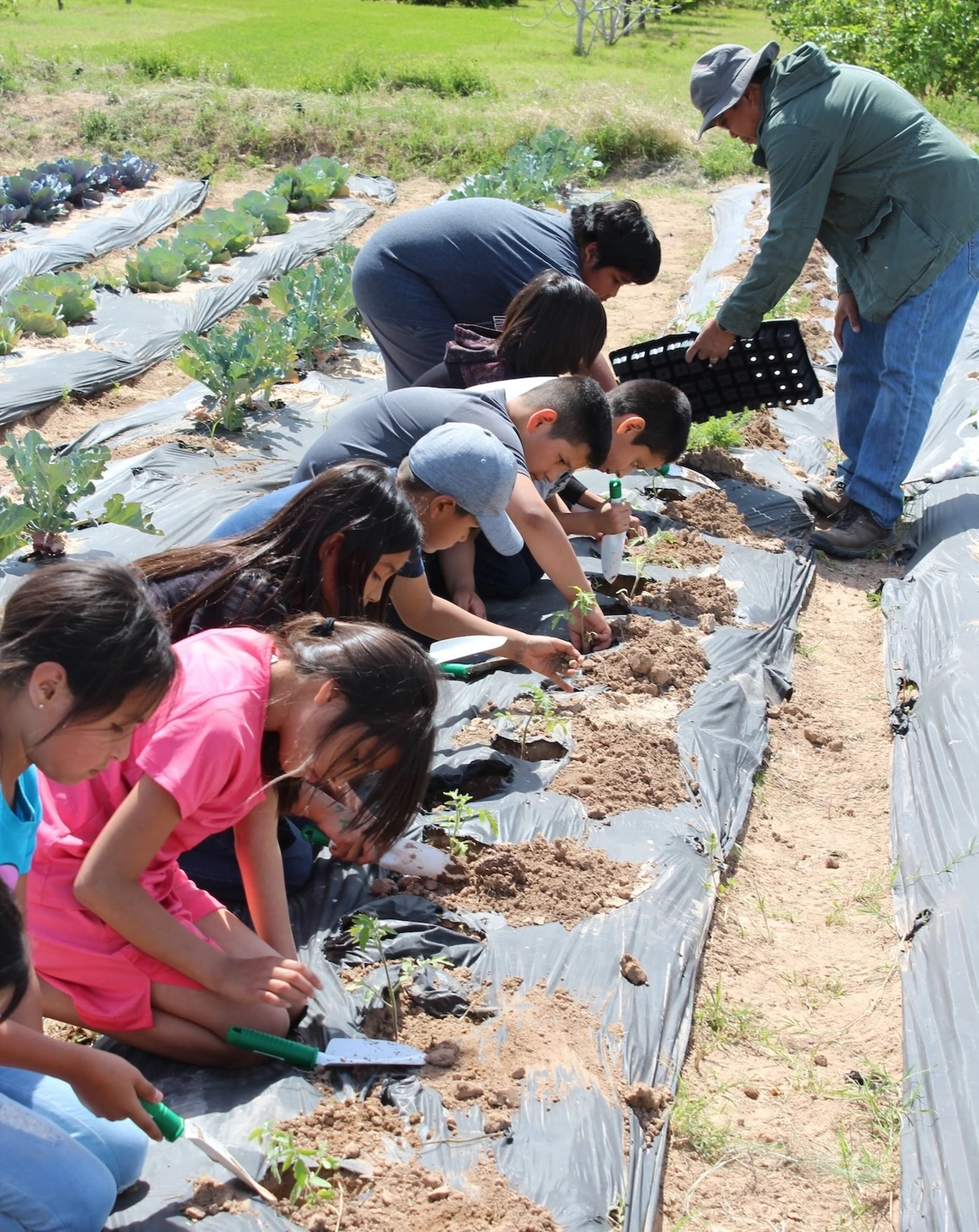Tribal Extension links university research to Native American communities
By living and working on tribal nations, our faculty and staff ensure our programs in agriculture, youth development and more are in tune with local needs.

This school garden at La Pera Elementary School in Parker is just one of many University of Arizona Cooperative Extension's tribal youth development efforts.
Cooperative Extension
University of Arizona Cooperative Extension’s tribal programs offer direct links between university research and Arizona’s 22 federally recognized tribes. Our staff live and work in tribal communities across Arizona, maintaining close ties through our seven offices on Native American nations.

Cooperative Extension
Tribal Assistant in Extension Adonis “Don” Alamban is the La Paz County/Colorado River Indian Tribes Extension director. He started with Arizona Extension as a master gardener volunteer in 2010 and has been county and CRIT director since 2019. He holds a bachelor's degree in agriculture, which he applied for 15 years in the pesticide industry in his native Philippines, and a master's degree in agricultural education from University of Arizona.
What is tribal Extension, how is it funded, and why is it important to have Extension staff dedicated to tribal communities?
Tribal Extension provides informal education to tribal communities with the aim of improving agricultural productivity and lives. Important consideration is placed on developing culturally relevant programs that respect tribal values and beliefs, thus the need for a dedicated Extension staff who understand indigenous culture and respect tribal beliefs. Another important aspect of tribal Extension is establishing relationships and trust. The long history of neglect and discrimination led tribal communities to not trust federal and state programs and personnel. The program is funded by the Federally Recognized Tribal Extension Program. Funding is limited, so Extension staff collaborate with other FRTEP agents and Extension faculty to apply for grants to fund our work in the community.
What are your main programming priorities? What are a couple examples of Extension programs that connect with communities?
The main Extension programs for the Colorado River Indian Tribes involve helping farmers and livestock growers improve productivity and our next generation develop through 4-H and school garden projects. A third priority is improving community health through health education and growing healthy food. To achieve this, Tribal Extension provides workshops on pest and disease management, fertilization and water management, as well as vaccination and good husbandry practices for livestock growers. For youth development, 4-H’s main projects include raising livestock and showmanship, teaching youth how to raise livestock and poultry, as well as developing their self confidence in all relationships and public speaking. Another project is the school garden, where we teach the basics of growing food, possibly sparking interest in farming.
What are some key challenges in tribal communities, and how does Extension address them?
The key challenge is establishing good relationships and gaining the trust of the leaders and community members. The long history of neglect and discrimination has led to distrust of outsiders, including programs from the federal and state government. Gaining back that trust takes time and showing the community we sincerely want to help and are not just doing our job. This involves learning about native culture to better understand their ways and values and understanding tribal needs. It means being present it their community activities, even on weekends and when we are off work. It also involves incorporating culturally relevant activities in your projects, like having a tribal elder bless your garden project or growing vegetables with cultural significance to the tribe. All these count toward showing your respect and valuing their culture. Only then will they open up and welcome us and cooperate with the programs we implement.
See our La Paz County/Colorado River Indian Tribes page for information about offerings in that area. See our tribal Extension page to learn about programs and events on other tribal lands.

